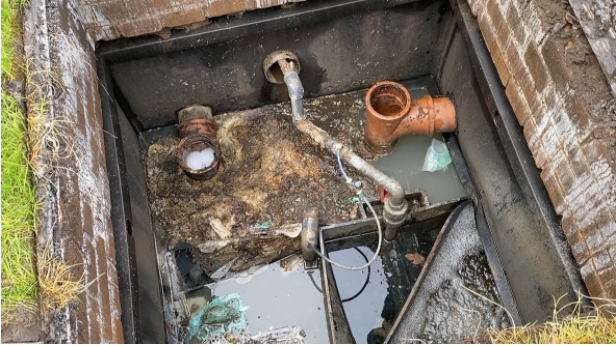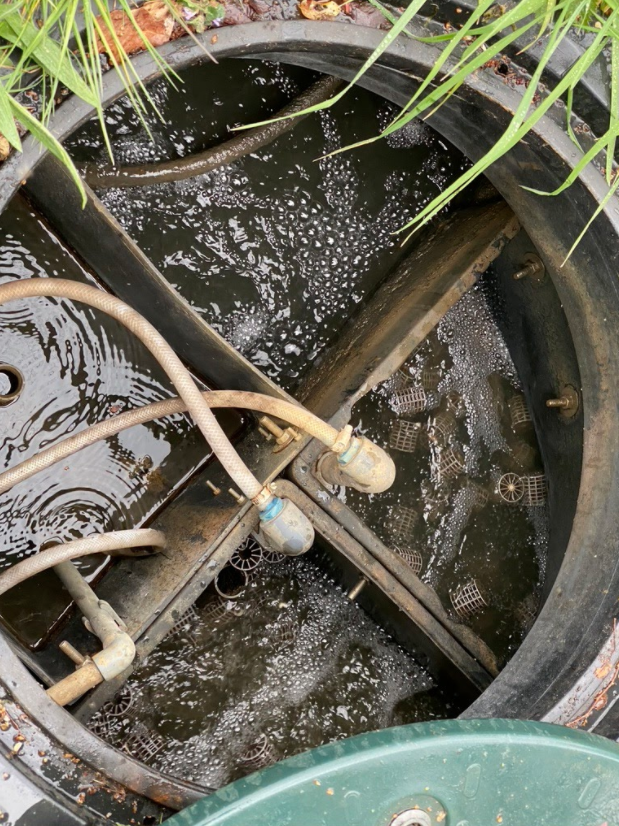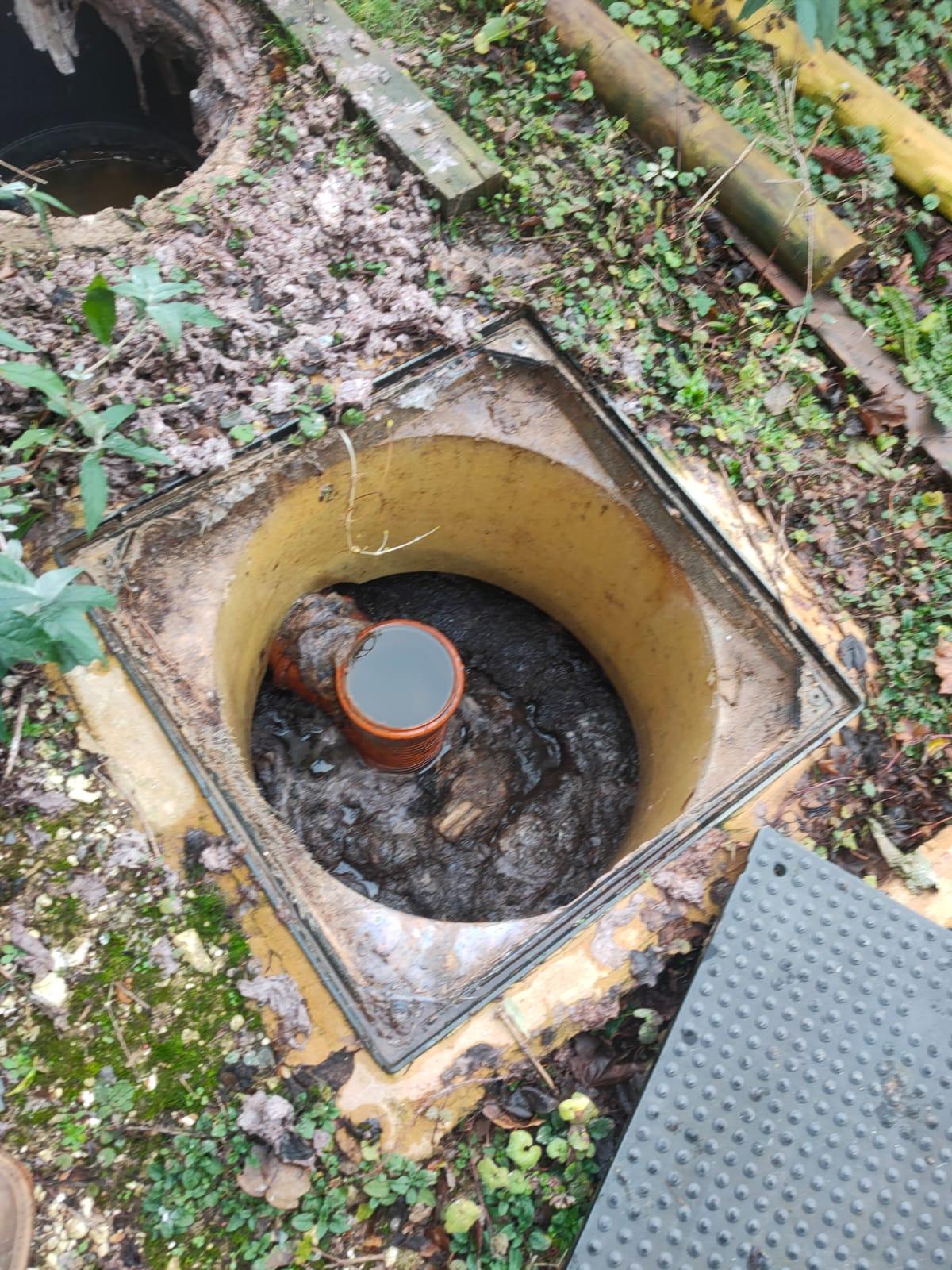How to know when to empty your small domestic Treatment Plant

Many of our customers will often own properties in areas not served by main public sewer lines. Instead, these homes or businesses will be served by a treatment plant or septic tanks, which need care and regular maintenance to keep them in good working condition. This includes all repairs and emptying of your private sewage system.
But how will you know when to empty your holding tank/septic tank?
Please take a look at the above image of a holding tank with the utility covers off so you can see the dip pipes. It is important that you empty your holding tank. If the holding tank is not emptied at the designed time, the gap between the top crust and bottom sludge will be lost. The waste inside will start to fill the first chamber, leaving less and less space for solids and liquids to settle and separate.

The solids may also thicken, encrusting on the sides of the tank and the dip pipes. When this happens, if any significant movement takes place in the tank, the crust can become so thick that the dip pipes will block or break.
This will allow fats and floating solids to pass straight through to the soakaway without being filtered.
How often should I empty my holding tank?
You should aim to empty your holding tank regularly, usually at least once a year. However, the size and usage of your septic tank may affect how many times per year your tank will need emptying.
For example, a tank for a household with one or two residents would not necessarily require as much emptying as a household with a family of five or more.
Large treatment plants of over 32 population may be emptied less frequently, unless the population using the treatment plant fluctuates on occasion, i.e. for large gatherings, or parties. This is possible because of the timers and recycling within the tank.
The lack of emptying will seriously affect the functions of this expensive large treatment plant. As such, it is always best to consult with a professional drainage service about how many times a year you should empty your holding tank before it gets full.

Signs your holding tank is causing pollution or damage to the soak, aways or rivers because of a lack of emptying.
There are a number of reactive different ways to tell if your holding tank is too full
You will know that you have forgotten to empty your holding tank if:
- Appliances and fixtures such as toilets and washing machines are draining slowly.
- There is pooling water around the tank and drainage field.
- Sewage is backing up into your property.
- You have not had your holding tank emptied according to the manufacturers' guidance or the advice from the treatment maintenance operator.
To learn more about any of the signs that any sewage tank needs to be emptied, contact us today on 0800 181 684. Our friendly office team are here to help.
